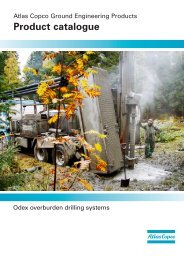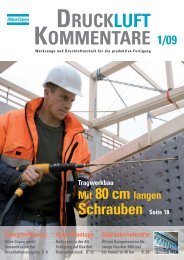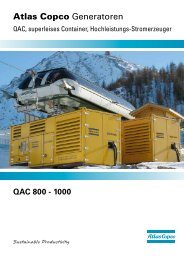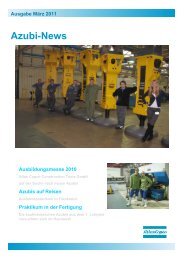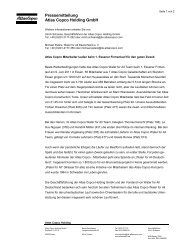Industrial Power Tools 2010-11 - Atlas Copco
Industrial Power Tools 2010-11 - Atlas Copco
Industrial Power Tools 2010-11 - Atlas Copco
You also want an ePaper? Increase the reach of your titles
YUMPU automatically turns print PDFs into web optimized ePapers that Google loves.
Step 3. To assure<br />
that the joint is<br />
correct<br />
With step 1 and 2<br />
the tool and the operator have been<br />
taken into consideration. However,<br />
the joint itself can also be a cause of<br />
the incorrect tightening. There can be<br />
several reasons for this. Missing parts<br />
like seals or washers will change the<br />
characteristics of the joint. Damaged<br />
threads or debris in the joint also lead<br />
to an improperly tightened joint.<br />
The way to detect these types of<br />
faulty joints is to monitor the tight ening<br />
angle during the tightening process.<br />
Operator guidance and feedback<br />
is provided by signal lights on the tool<br />
and by using socket selectors etc.<br />
Step 4. To assure<br />
that safety critical<br />
joints are tightened<br />
properly<br />
This is the level required for safety critical<br />
joints. All tightening data is documented<br />
and can be retrieved for error<br />
analyses. Documented tight ening data<br />
for safety critical fasten ers are essential<br />
in order to avoid or limit recalls and<br />
warranty claims.<br />
Step 5. To assure<br />
zero fault production<br />
Having reached step 4<br />
in the advance to zero fault production<br />
still leaves room for mistakes. With step<br />
5 two further elements are introduced<br />
for fault-free production. One element<br />
is the introduction of part identification,<br />
the other is reject management. With<br />
step five the tool controllers are not<br />
only networked – they are also connected<br />
to the factory network. Information<br />
about the components is sent over<br />
the factory network. By identifying the<br />
components that are to be assembled,<br />
relevant information is transferred to<br />
the tool controller via the network. This<br />
safeguards both that the correct component<br />
is being assembled and that<br />
corresponding tightening parameters<br />
are chosen.<br />
9



